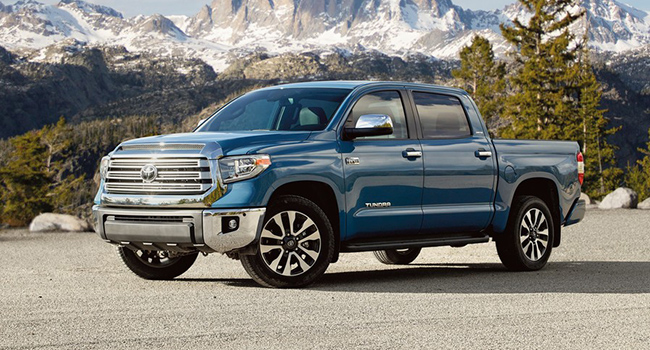
 If I was a traffic cop and I wanted to make city roads safer and fulfil my ticket quota, one of the first things I’d do is pull over every full-size pickup truck that crosses my path.
If I was a traffic cop and I wanted to make city roads safer and fulfil my ticket quota, one of the first things I’d do is pull over every full-size pickup truck that crosses my path.
That would be especially true of the jacked-up, fat-tired, lift-kit behemoths that seem to be piloted by testosterone-addled scofflaws who drive like they’re in some sort of death race. They possess a sense of entitlement that’s hard to comprehend.
When I take a tally of my driving experiences around the city and think about the things that make me crazy, I keep coming back to big pickups. They take up more room than they’re entitled to, make things more difficult than they should be for the rest of us, and their owners appear to be tone-deaf when it comes to obeying traffic laws and behaving sensibly.
Besides, who needs a truck of this size in the city?
That said, when I get the chance to drive one, it’s usually a surprisingly pleasant experience. They may be huge, obnoxious and clumsy, but full-size trucks are amazingly driveable these days and I can see why their owners love them so much. I don’t like it but I get it.
Take the full-size Toyota Tundra.
Introduced in 1999, the Tundra is in its third generation and is manufactured in San Antonio, Texas. It’s the only full-size pickup made in that state.
Power is delivered by a 5.7-litre V8 mated to a six-speed automatic only. Offered in three basic versions – two-wheel-drive or four-wheel-drive Double Cab, and four-wheel-drive Crewmax – the Tundra can seat up to six people.
It has a wheelbase of 4.181 metres (164.6 inches) and a maximum bed length of 2.479 metres (98 inches). This makes it a big boy and you notice that as soon as you slip behind the wheel.

My test TRD SR5 had the smaller bed, about 66 inches in length.
The engine is one of the most responsive yet well-behaved power plants in this market. Remarkably powerful, yet docile in the city, it will allow you to tow up to 4,536 kg (10,000 pounds). Reserve power on the highway is outstanding. which means it can handle just about the biggest utility trailers and/or camping units you can find.
That, of course, is what it should be doing – hauling equipment, towing boats trailers, moving horses around, not uselessly schlepping around the city, getting in everyone’s way, sucking up gas and taking up parking spaces. (Sorry for the rant but big trucks in the city is a pet peeve of mine.)
The Tundra will absorb 144 litres of fuel and delivers a combined fuel economy of 15.9 litres/100 km, definitely on the thirsty side but that’s the status quo in this market.
I’m also less than thrilled with the gearbox – it seemed kind of indecisive to me and a little wonky in rush-hour traffic.
In addition to standard modern conveniences such as heated seats, climate control, satellite radio and so on, my truck had all the usual nanny features: pre-collision avoidance, lane departure alert, backup camera, etc. The backup camera is an excellent feature for a vehicle of this size but the rest … whatever.
Another thing that got my attention was how quiet this rig is, both around town and on the highway. That could be because it’s so well screwed together or just the configuration of the vehicle. Despite their size, pickup trucks tend to be quiet during operation, which is a plus.
I appreciate the performance, utility and practicality of full-size pickups, and love the way they pamper their occupants these days. But unless you’re putting something the size of the Tundra to work, I can’t see the point. There are plenty of smaller trucks on the market that are almost as practical and much more appropriate in the city.
Better on fuel as well.
2020 Toyota Tundra
Engine: 5.7-litre V8
Transmission: six-speed automatic
Drive: two-wheel/four-wheel
Horsepower: 381
Base price: $40,650
Fuel economy: 17.7 litres/100 km city, 13.6 litres/100 km highway, with regular gas
Some alternatives: Ford F-150, Ram 1500, Chevrolet Silverado, GMC Sierra, Nissan Titan
Ted Laturnus writes for Troy Media’s Driver Seat Associate website. An automotive journalist since 1976, he has been named Canadian Automotive Journalist of the Year twice and is past-president of the Automotive Journalists Association of Canada (AJAC).
The views, opinions and positions expressed by columnists and contributors are the author’s alone. They do not inherently or expressly reflect the views, opinions and/or positions of our publication.
